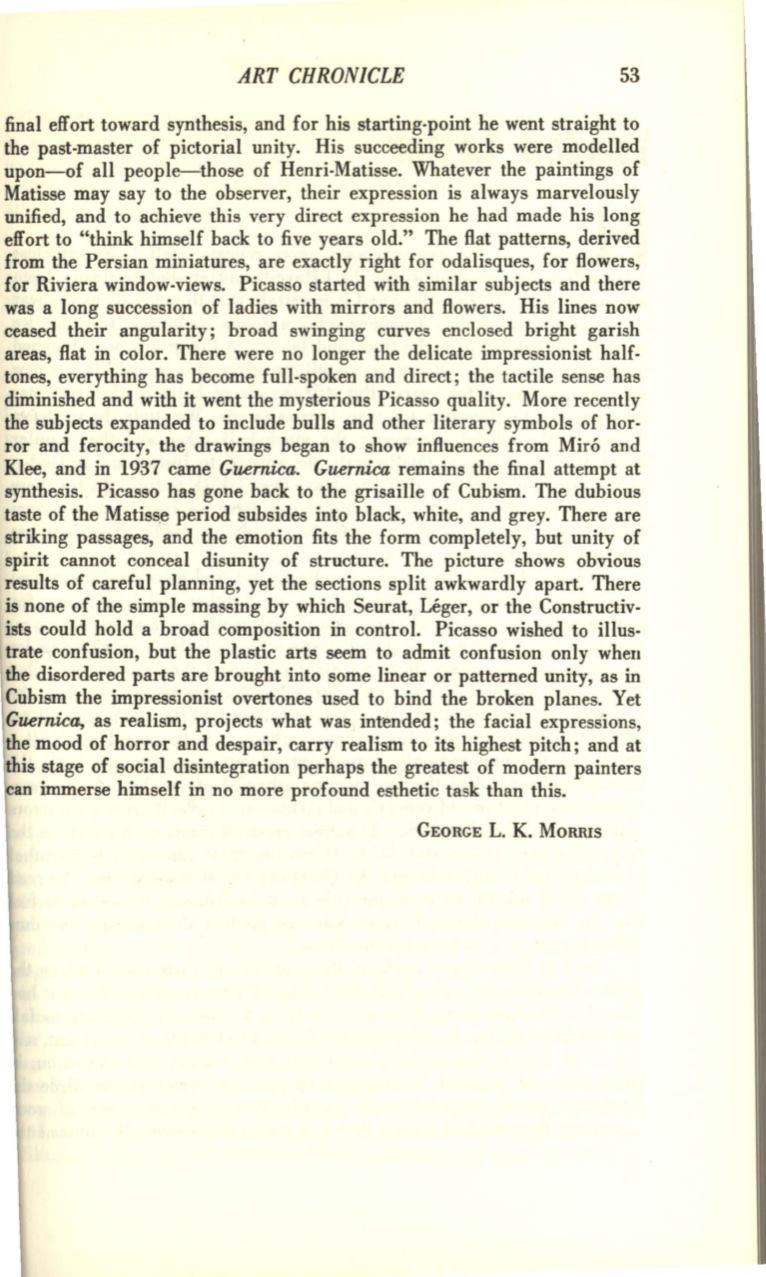
ART CHRONICLE
53
final effort toward synthesis, and for his starting-point he went straight to
the past-master of pictorial unity. His succeeding works were modelled
upon-of all people-those of Henri-Matisse. Whatever the paintings of
Matisse may say to the observer, their expression is always marvelously
unified, and to achieve this very direct expression he had made his long
effort to "think himself back to five years old." The flat patterns, derived
from the Persian miniatures, are exactly right for odalisques, for flowers,
for Riviera window-views. Picasso started with similar subjects and there
was a long succession of ladies with mirrors and flowers. His lines now
ceased their angularity; broad swinging curves enclosed bright garish
areas, flat in color. There were no longer the delicate impressionist half–
tones, everything has become full-spoken and direct; the tactile sense has
diminished and with it went the mysterious Picasso quality. More recently
the subjects expanded to include bulls and other literary symbols of hor–
ror and ferocity, the drawings began to show influences from Min) and
Klee, and in 1937 came
Guernica. Guernica
remains the final attempt at
synthesis. Picasso has gone back to the grisaille of Cubism. The dubious
taste of the Matiss.e period subsides into black, white, and grey. There are
striking passages, and the emotion fits the form completely, but unity of
spirit cannot conceal disunity of structure. The picture shows obvious
results of careful planning, yet the sections split awkwardly apart. There
is none of the simple massing by which Seurat, Leger, or the Constructiv–
ists could hold a broad composition in control. Picasso wished to illus–
trate confusion, but the plastic arts seem to admit confusion only when
the disordered parts are brought into some linear or patterned unity, as in
Cubism the impressionist overtones used to bind the broken planes. Yet
Guernica,
as realism, projects what was intended; the facial expressions,
the mood of horror and despair, carry realism to its highest pitch; and at
this stage of social disintegration perhaps the greatest of modern painters
can immerse himself in no more profound esthetic task than this.
GEORGE
L. K.
MORRIS


